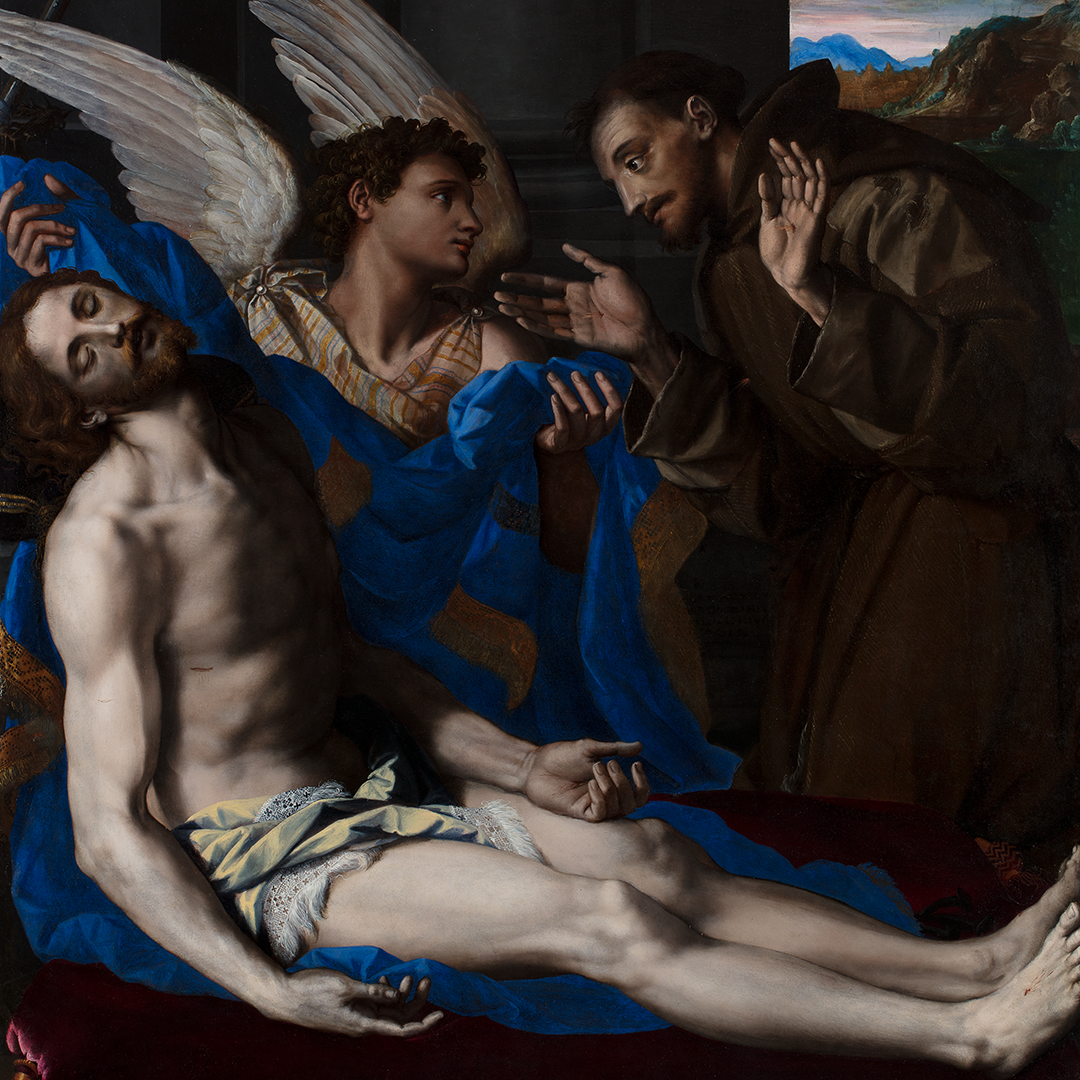
Alessandro Allori’s journey as an artist, emerging from tragic circumstances to become a pivotal figure in the late Renaissance period in Florence, is a tale of resilience, artistic innovation, and technical proficiency. The story of Allori is not just about individual genius, but about the rich and complex cultural milieu of Renaissance Florence, a crucible of artistic talent and innovation.
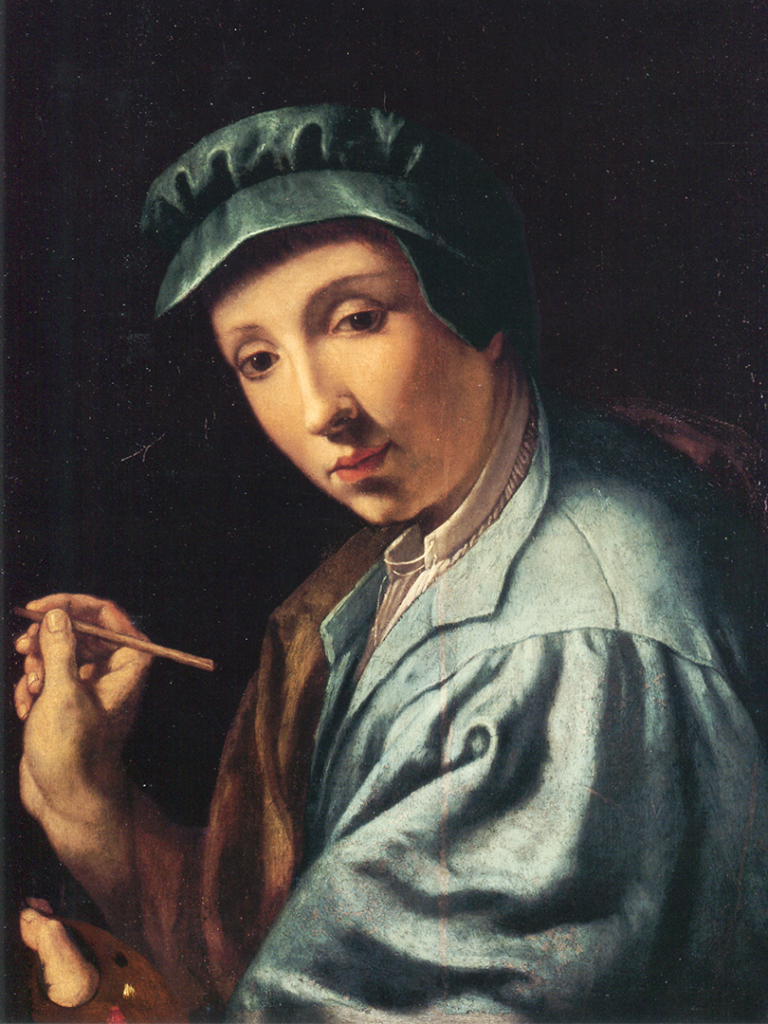
Born in 1535, Alessandro Allori was orphaned at the age of five. Bronzino, who was a close friend of Allori’s father, took the young Alessandro under his wing, providing him not only with a home but also an artistic education that would shape his future. Bronzino, who often referred to Allori as his nephew, favoured him above all other. Himself a disciple of Jacopo Pontormo, Bronzino was known for his elegant portraits and religious works that combined precise draughtsmanship with a somewhat chilly elegance and stylization characteristic of Mannerism. Under his meticulous guidance, Allori will learn the importance of anatomical precision, a skill that would become a hallmark of his own works.
Allori thus infused his mentor’s style with his own sensibilities. He developed a distinct sense of relief in his paintings, characterized by an enamelled colour palette that often portrayed a certain coldness, and an unusual lighting that lent an otherworldly, almost surreal quality to his works. To honour his mentor and adoptive father, Allori will integrate Bronzino’s name into his own signature, continuing the practice even after his master’s death.
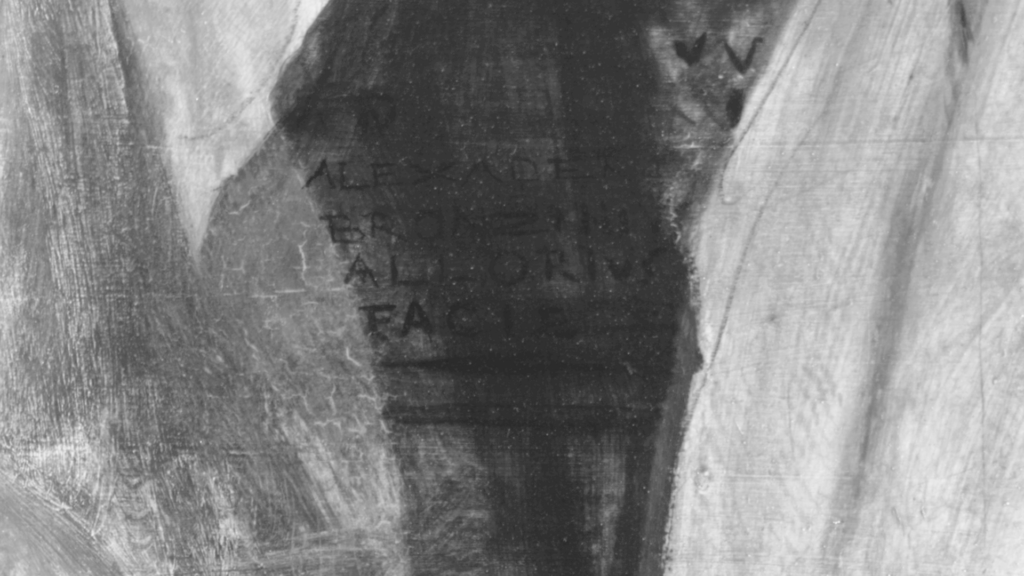
The 1580s were a significant period in Allori’s career. During this time, he began to oversee a large workshop, a testament to his growing reputation. This period coincided with the passing of both Bronzino and Giorgio Vasari, leaving Allori as one of the leading figures in the Florentine art scene.
It was also during the 1580s that the motif of the deceased Christ became a recurring theme in Allori’s work. This was reflective of the religious and cultural atmosphere of the Counter-Reformation, a period marked by a resurgence of religious art aimed at inspiring devotion and adherence to the Catholic faith. In this context, Allori’s depiction of Christ and religious figures took on a profound emotional and spiritual depth.
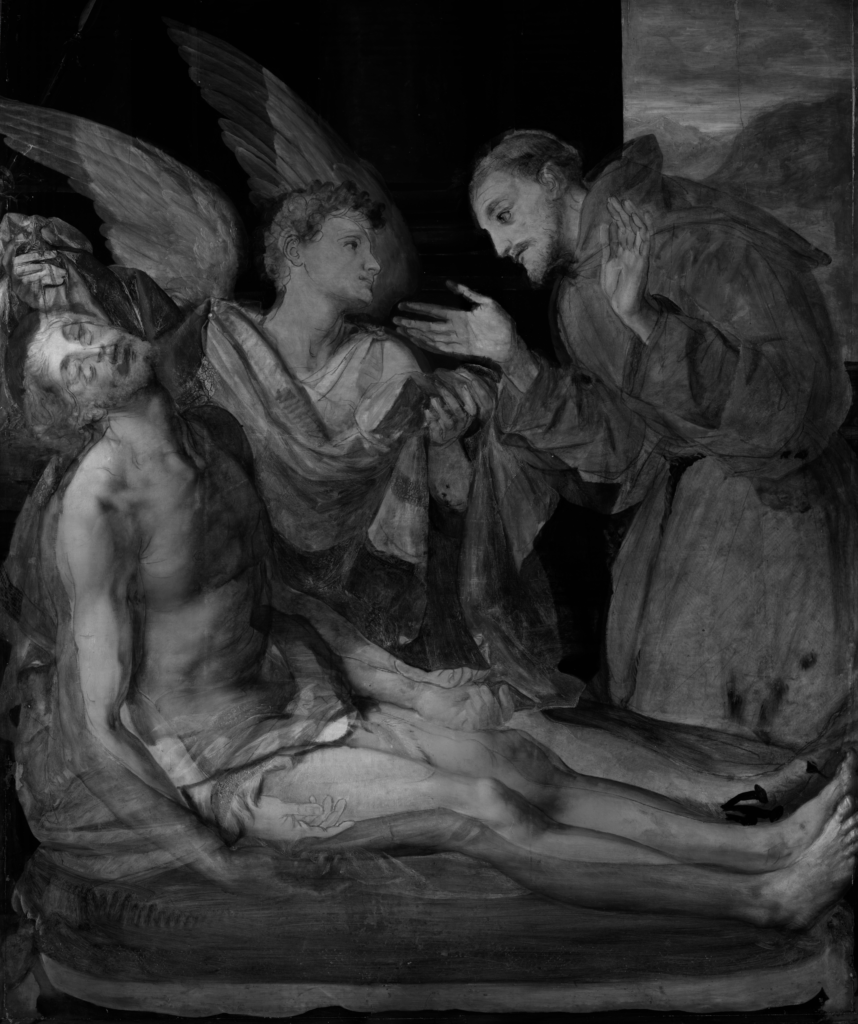
One of Allori’s notable works from this period is the painting in Chantilly, which depicts an angel showing Saint Francis of Assisi the body of Christ shortly after deposition from the cross. This painting is a quintessential example of Allori’s skill in combining intricate detail with profound emotional expression. The figure of Saint Francis, depicted in a state of rapturous connection with the divine, is a powerful representation of the spiritual fervour that characterized the Counter-Reformation.
In this painting, the anatomical representation of Christ is particularly noteworthy. Allori’s deep understanding of anatomy, honed under Bronzino’s tutelage, is evident in the lifelike portrayal of Christ’s figure. The attention to detail is further exemplified in the intricate embroidery of the velvet cushion, which adds a rich texture to the composition.
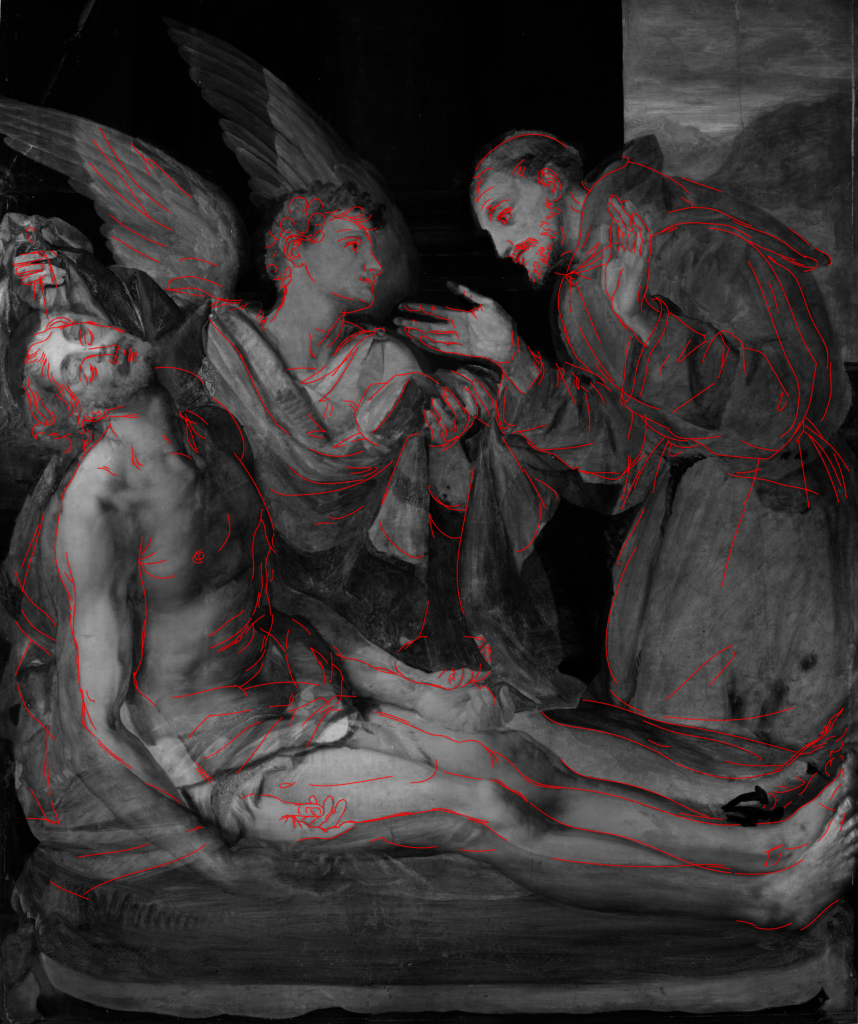
The use of infrared reflectography has provided fascinating insights into the artist’s process, revealing the presence of a detailed preparatory drawing underneath the paint, executed freehand using charcoal. This preparatory layer shows significant pentimenti in the composition, particularly in the positioning and details of Christ’s face, arms, and legs.
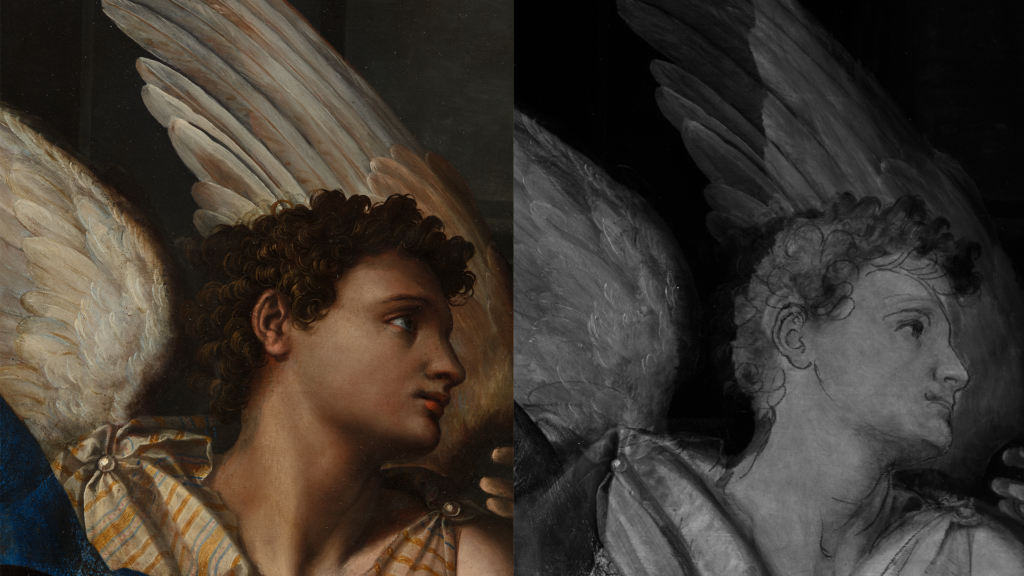
Furthermore, infrared analysis has brought to light modifications in the angel’s wings and in the hands of Saint Francis, suggesting a dynamic and evolving creative vision. Interestingly, Allori’s signature was also revealed, adding another layer of understanding to this remarkable work.
Allori’s work, particularly in the latter part of his career, reflects a deep engagement with the religious and cultural shifts of his time, marrying technical excellence with a profound emotional and spiritual resonance. His unique visual language, characterized by anatomical precision and a striking, almost ethereal use of light and colour, marks him as a significant figure in the transition from Mannerism to the early Baroque.
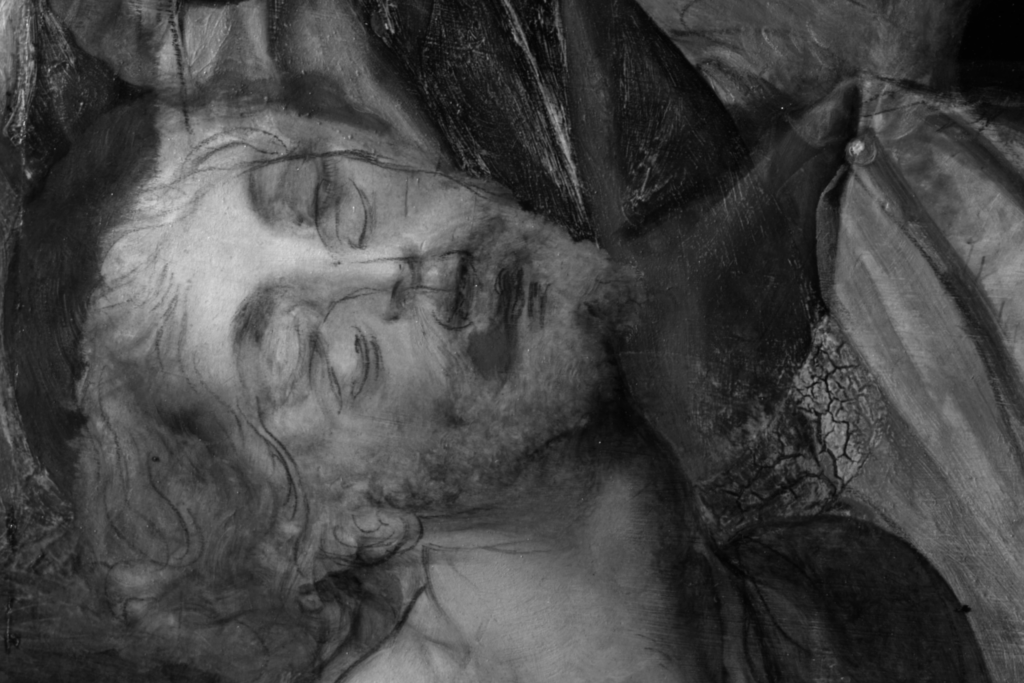
The insights gleaned from infrared reflectography not only enhance our understanding of Allori’s creative process but also illustrate the evolving nature of artistic creation, where each layer of paint and each altered line tells a story of decision and revision.
Alessandro Allori’s legacy not only lies in his artworks but in his approach to art as a dynamic and evolving practice. His contributions to the Florentine art scene, his ability to adapt and grow within the rapidly changing artistic milieu of the late Renaissance, as well as his influence on subsequent generations of artists cement his place as a pivotal figure in art history.
Alessandro Allori, An Angel Shows Saint Francis of Assisi the Christ Detached from the Cross, oil on panel, 1583, oil on panel, Château de Chantilly – Musée Condé
Infrared images were taken using Opus Instruments Apollo Camera . If you would like to enquire about Opus products, please email : [email protected]
Text provided by RES & Opus Instruments. Images 2 – 6 provided by RES.